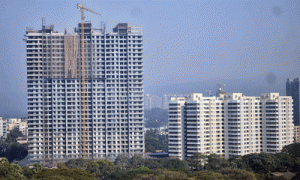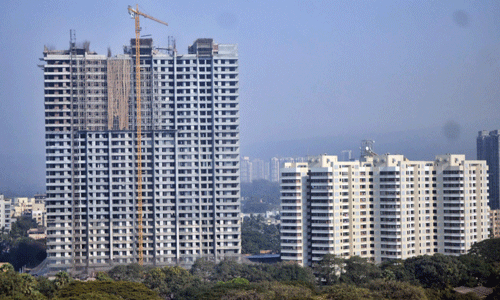Bottom Line: The New Model Building By-laws (MBBL) promises to reduce human interface and provide a structural framework to create an online single window system, thereby reducing corruption.
 One of the fundamental reasons of delays in real estate projects has been the number of clearances. The issue gets all the more problematic when it comes to obtaining the mandatory clearances at the Centre as the developers have to rush to Delhi.
One of the fundamental reasons of delays in real estate projects has been the number of clearances. The issue gets all the more problematic when it comes to obtaining the mandatory clearances at the Centre as the developers have to rush to Delhi.
The developers’ defence, grouse and often alibi of project delays have been that they are running to Delhi for environmental, height and other such clearances and there is neither any clarity over the policies nor any structural mechanism for time-frame. Single window clearances have been the wishful thinking on part of the developers and the homebuyers were left with a wing (house rent) and the prayer (EMI).
Not anymore! If only the New Model Building By-laws (MBBL) announced by the Union Urban Development Minister M Venkaiah Naidu is followed in letter and spirit, it will reduce the human interface and provide a structural framework to create an online single window system, thereby reducing corruption as well.
The new set of guidelines under the MBBL also makes it mandatory for states to provide all building clearances within 30 days. As per the guidelines, one does not require to come to Delhi to get green clearance for the projects involving built up area of up to 1.5 lakh square meter.
Currently, there are over 35 different kinds of clearances required from various agencies before initiating any new project. Besides getting clearances from the State-based agencies, the developers in many projects require clearances from Central ministries, including Defence, Civil Aviation, Environment and Forests, Culture and Consumer Affairs.
The MBBL provides for integration of various types of environmental considerations. MBBL provides for three categories of buildings based on the built-up area – 5,000 to 20,000 square meter; 20,000 to 50,000 square meter and 50,000 to 150,000 square meter – and different set of environmental conditions are provided for each category.
A risk-based matrix for different types of buildings has been introduced in the by-laws. The objective of this analysis is that small buildings with low risk criteria should be approved on a fast track and the high risk buildings like mall, multi-story or big commercial complexes should be examined in the required detail.
What is New Building By-laws?
- The Union Government has framed a Model Building Bye-Laws, 2016 for granting permission for construction of buildings
- The last time the Model Building Bye-Laws were issued in 2004
- It seeks to provide an online single window framework for approval process
- Model Building Bye-laws, 2016 intends to improve ease of doing business regarding issuance of construction permits
- The time limit for all kinds of single window approvals is 30 days and if it is not done by the concerned agencies within this time frame then it will be deemed as approved
- Different set of environmental conditions is provided for each category of building ranging from 5000 square meters to 1.5 lakh square meters
- Urban local bodies (ULBs) will have the power the monitor the environmental concerns in their region
Welcoming the MBBL, Anshuman Magazine, Chairman & MD, CBRE South Asia says this will go a long way in improving ease of doing business in the construction sector. A single-window clearance mechanism, reduction in time for approvals, environmental considerations, and the added influence of Urban Local Bodies and Development Authorities are all steps in the right direction.
“Coming on the back of the passage of the RERA Bill, this has been among key measures the government has been trying to implement for the development and regulation of real estate in India,” says Magazine.
Homebuyers have their own reasons to welcome the MBBL. They nevertheless have a query: Homebuyers want to know that when the approvals will be less time consuming and less costly will it affect the property prices. After all, the developers for long have maintained that approval delays are one of the major reasons of cost escalation.
“I feel the new guidelines should not be a symbolic ease of doing business for the developers. It should rather have a substantive effect on the whole eco-system. When the government is facilitating the time and cost reduction then it should reach to the common buyers as well. Failing this, it is a transaction between the builder and the government,” says Swati Khandelwal, a homebuyer.
Nikhil Hawelia, Managing Director of Hawelia Group agrees that post the implementation of the MBBL the developers will have no alibi for project delays, as clearances will be on time and any delay is developer’s own mismanagement of the project or the funds. He nevertheless maintains that the new guidelines have more pragmatic vision than just the project delays. The ball is now in the court of States to frame their own By-laws in line with MBBL.
“Finally we are heading to a sustainable and progressive eco-system of real estate development. The New Model Building Bye-laws also focuses more on building adequate number of toilets in buildings, particularly for women, keeping in mind their participation at work place. What is most farsighted is the fact that it offers incentives to real estate developers for adopting smart energy solutions. Provision for rainwater harvesting, roof top solar energy harvesting and smart metering have been proposed in the new bye-laws,” says Hawelia.
Applauding the announcement of the Model Building Bye-laws by the Ministry of Urban Development Vineet Relia, Managing Director, SARE Homes says this could not have come at a better time considering that this was the next big reform in line after the Real Estate (Regulation and Development) Bill passed by the Parliament recently.
“The decision will streamline approvals and enable time-bound clearances for construction projects. It will also ensure ease of doing business by making the application process much faster and transparent and also lend responsibility and accountability to the whole system. A simpler and uniform process will also help reduce project costs by cutting down on project execution delays,” says Relia.
There is no denying that the New Model Building By-laws seems to be very pro-active regulation for the interests of both the developers as well as the homebuyers. But, as they say, the devil lies in the detailing. If only the States also implement it with the same spirit it will go a long way in easing the approval process and the timelines of the project. After all, there are as many approvals needed at the State level as with the Centre.
Where the industry is silent as of now and the homebuyers are curious is over the pricing factor of the product if the timelines are reduced. After all, less human interface also means less corruption, which is one of the input costs of the developers.
Will they pass the benefit to the homebuyers? Will speedy clearances mean the homebuyers will get the houses on time? Will it lead to an eco system where the speedy clearance would not amount to the developers flouting the norms and the government agencies having no time to check it? As of now, there are more questions than what the New Model Building By-laws could answer.
By: Ravi Sinha





